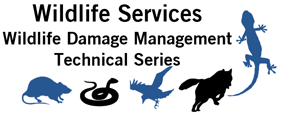United States Department of Agriculture: Animal and Plant Health Inspection Service

Wildlife Damage Management Technical Series
Date of this Version
4-2020
Document Type
Article
Citation
Bodenchuk, M.J. and D.L. Bergman. 2020. Grackles. Wildlife Damage Management Technical Series. USDA, APHIS, WS National Wildlife Research Center. Fort Collins, Colorado. 16p.
Abstract
Numbering in the tens of millions of birds, grackle populations in North America can cause a variety of conflicts with people. Grackles eat agricultural crops and livestock feed, damage property, spread pathogens, and collide with aircraft. Their large roosts can be a nuisance in urban and suburban areas. A combination of dispersal techniques, exclusion, and lethal removal may help to reduce grackle damage.
Grackles adapt easily to human-dominated environments, and exploit human food and other features of human landscapes. Thus, an integrated damage management approach to grackle damage focuses on reducing and eliminating the damage, rather than simply controlling grackle populations.
Three species of grackles are present in North America: the common grackle, the boat-tailed grackle, and the great-tailed grackle. A fourth species, the greater Antillean grackle (Q. niger) is present in Puerto Rico. All are part of the Family Icteridae that includes blackbirds, orioles, cowbirds, meadowlarks, and bobolinks. The population status of all three grackle species is considered common to overabundant.
Included in
Behavior and Ethology Commons, Biodiversity Commons, Other Animal Sciences Commons, Other Ecology and Evolutionary Biology Commons, Population Biology Commons, Terrestrial and Aquatic Ecology Commons

